February 22, 2016

It has been more than 5 years since the day when I was driving by a dealership and thought: "today is a good day to buy a Jeep". It was the best car that I owned, by far.
The biggest thing I bought with it was the capability. It's drive anywhere in comfort. Not the comfort as isolation from road imperfections or noise: it is a real jeep with all the discomforts that implies. But it's a comfort of driving. With RAV4 I could get wherever I need to get, or nearly. Jeepers in my club were often surprised. But it took a continuous, grueling effort: watching your track at all times on the trail, plan every move ahead to put the wheels just right. It was exhausting. But the Rubicon just rolls over everything. So easy.
Aside from the big advantage of the capability, one minor thing that I learned to appreciate with the jeep is driving a convertible. Never been a fan of that previously: it's noisy and dusty. Really not a thing to do in town. But out in the desert it feels proper. Wrangler is designed with no regard for the ease of access to the back with the top on (it's a big reason why 4-door versions are so popular).
However, I had trouble fitting in. At my height, the roll bar intruded into the area where my head needed to be. If I were to be rear-ended, I would crack my skull upon the cage. So, I reworked the seat brackets to lower the driver seat. It was the biggest mod I did to the jeep, it even required cutting and welding. Other mods were fairly minor: things like a CB antenna and rails.
Initially I was apprehensive about reliability. And I even had a transmission leak. But the leak was fixed under warranty and the jeep was trouble-free since then. It's at 85k miles now.
BTW, it gets about 19 mpg in daily driving.
The only weak spot in the jeep is its lack of sportiness. It squats and sways too much, and rather slowly too. It's just not chuckable, even with traction control off. But that comes with the territory.
Pictured: Jeep at the Imogene pass, Colorado.
UPDATE: A few small good things:
- Pulling on a door handle of a locked door unlocks it. I'm not a fan of the design where occupands must unlock doors for handles to work. Scion xB was like that (in both generations) and it made me mad.
- Fog lights can be turned on in conjunction with parking lights only. On RAV4.3, headlights had to be on for fog lights, which pretty much defeated the purpose of the fog lights. Useful fog lights are designed to illuminate the road, but not the fog. If normal headlights are on, their light is reflected by the fog and obscures the road.
- Although headlights were often panned as dim, their plastic is tough and does not go yellow with age.
Posted by: Pete Zaitcev at
10:55 PM
| No Comments
| Add Comment
Post contains 505 words, total size 3 kb.
February 15, 2016
A typical scare piece was linked by Instapundit today, which makes the following assertion:
When China enters a market, the intention is to destroy indigenous competition. From American to Nigerian to Turkish textile jobs — all down 90 percent — local earning power is destroyed. Everywhere and in every area — again it’s steel, aluminum, solar panels, toys and electronics — China hollows out local production.
There was a time when I could take this sort of breathless propaganda seriously, but something happened recently: Mooney rolled out the M20V Ultra.
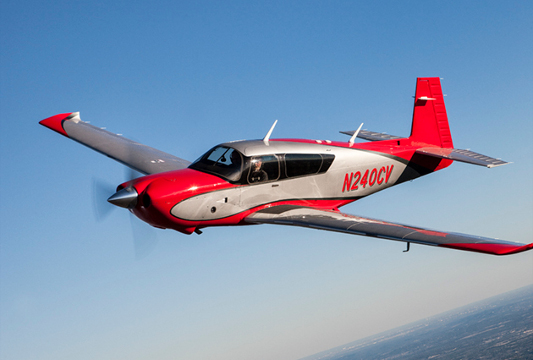
For those not in the know, Chinese were gobbing up the basement of the aviation industry in the U.S. for many years now, and they are quite brazen about it. One historic anecdote is that when they bought Cirrus and sent the occupation team in, workers put up a big banner "Welcome Our Chinese Partners!" The Chinese were outraged. We are OWNERS not partners, they said, and ordered the banner taken down immediately.
The Chinese purchase of Mooney was met with a large skepticism. Everyone knew that Mooney was done, over, finished. The product was too old, too expensive to make. The notional purchaser, Mr. Chen, was secretive about the source of his money. Everyone in the industry thought he was either clueless or a scammer. Then, the company rolled out the model M10 - a revolutionary airplane for them, but made in California, not Texas, and revealed in Zhuhai, China. Ah-ha, cried the skeptics. Now we know - Chen wants to take the American expertize and build airplanes in China! Well, 2016 comes in and Mooney in Texas announce a major renovation to the factory, a major advance for the M20 line with the M20V Ultra. It was not just the new door and the composite shell, but also the new electrics and electronics that comprise a large part of the cost.
In other words, a Chinese overlord rescued a storied American company that American investors bailed upon, made it make new and exciting products that are world class again. In addition, the new composite production in California helps along the traditional manufacturing in Texas. This was not what the narrative taught us.
Meanwhile in Minnesota and South Dakota they are getting ready to the imminent certification of Cirrus SF50 - an amazing personal jet, the likes of which the world has not seen. If that's what slaving under the yoke of Chinese is like, perhaps it's not that bad. I've seen worse coming from New York schuisters when they took over companies.
All that is quite far from "hollowing local production". Now, granted, the new Chinese owners may be incompetent; the investments are risky. Mooney, Cirrus, Teledyne/Continental, and any number of their other aviation ventures in the U.S. may yet fail — they have failed already on their own once or more. But at least we'll get a Mooney with the pilot's door, which is a net positive in my book.
UPDATE: First flight on June 6, 2016, by the Ovation Ultra version with Mike Miles at the controls.
Posted by: Pete Zaitcev at
06:17 PM
| No Comments
| Add Comment
Post contains 518 words, total size 3 kb.
January 30, 2016
The on-again, off-again saga of aeronautical charting of Spaceport America turned again, this time with a brand new symbol:

Posted by: Pete Zaitcev at
03:15 PM
| Comments (2)
| Add Comment
Post contains 24 words, total size 1 kb.
January 24, 2016
An expert on self-defence wheelguns and the author of "Defensive Revolver Fundamentals" blogs the Kimber's revolver surprise thus:
Kimber originally asked me for input on what the "ideal†defensive/concealed carry revolver would look like. They didn’t want to make a hunting revolver or a competition revolver or a "tactical†revolver, but one that would actually be a useful defensive arm for those people considering a revolver for self defense. [...]
I suggested to them that a good self defense revolver would carry six rounds, have a great trigger and good sights. Of course there were a lot of other details that were important: it needs to fit and feel good in the hand, have rounded edges that were comfortable and didn’t chew up clothing, be of a concealed or enclosed hammer and double-action-only, have a rounded and smooth trigger face, be easily used by people with smaller hands, and of course be of high quality. In short, it wouldn’t be revolutionary but rather evolutionary: none of this stuff is really new, but it’s never been put together in one gun. The goal was to get everything into one package and get the details right.
Basically, if you could make a better J-frame, how would you go about it? Grant Cunningham pondered that question for 15 years, until Kimber came along, and this is the result.
Posted by: Pete Zaitcev at
11:56 PM
| No Comments
| Add Comment
Post contains 229 words, total size 2 kb.
January 15, 2016
Executive summary: Yaris is a terrific obsolete little car.

I am quite aware that it is not popular for ownership, and when I shopped in the category in 2013, Fit has beaten it easily. Fit's design is stronger inside and out, especially with the touches like the USB pigtail, all the cubbyholes, and of course the multi-function rear seats that are as famous as Caravan's hiding seats. Fit's internal volume is also larger, yet it's quite sporty even on the power of a 115 hp engine. Compared to Fit, Yaris is cute, but not as cute. It's fast, but not as fast. It's comfortable, but not as comfortable.
Still, as far as el-cheapo cars go, Yaris is quite nice. There's really nothig to complain about at the price. Okay, maybe finding a blade long enough for the Mercedes-style solitary wiper may be a chore. The seats are not thick, so they cannot comform to a wide variety of butts: you either fit great or not at all. But at least Yaris does not have the insufferable blue LEDs in the dash like Corolla. It actually uses a corporate round-corner radio that it borrows from Scions.
Another thing I like about Yaris is that it sticks to small wheels. I just cannot stand how constructors go for larger and larger wheels these days. Being a newly made holdover from a bygone era is sort of the theme in Yaris. In addition to sporting 14-inch wheels it has a CD player (with USB inputs, fortunately). It uses an obsolete drivetrain with naturally-aspirated 4-cylinder and a 4-speed conventional automatic. Although it returned about 30 mpg, I have to admit that the test included a lot of highway driving. But there's something endearing about the known and proven. Pretty soon cars like that will have 3-cylinder turbocharged mills and CVTs across the board. Just not yet.
Would I buy one? No, I bought Fit. But would I drive one? Totally.
Posted by: Pete Zaitcev at
03:52 PM
| No Comments
| Add Comment
Post contains 330 words, total size 2 kb.
November 07, 2015
Just saving it here in case (seen printed on paper).
After lots of trial and error, I discovered a method that helps prevent this and makes getting a solid grip much easier. When you reach into your pocket, angle your hand toward your ulna (the pinky-finger side of your forearm) and flag your thumb slightly so the thumb and fingers enter the pocket at the same time. As soon as they're in the mouth of the pocket, turn your hand around the axis of your forearm (for right handers, counterclockwise). This turn causes the thumb and fingers to spread the pocket mouth and aligns the web of the thumb with the backstrap of the pistol. Now, simply dive straight down and achieve a normal grip with a straight trigger finger. You are ready to draw.
Of course, the move needs to be practiced. My sensei says that as a rule of thumb, 3,000 repeatitions is a good place to aim for a basic profeciency, 10,000 for mastering it.
Posted by: Pete Zaitcev at
08:08 PM
| No Comments
| Add Comment
Post contains 175 words, total size 1 kb.
November 01, 2015
Another trip to Japan, another short hop in a glider, this time with the Soaring Club of Japan (glider.jp) out of Itakura. They are organized a little differently from Takikawa Skypark, where you show up, pay your fee, and get a ride. Instead, you become a member of the club for a day, theoretically speaking. Therefore, I had plenty of fun helping out with the club activities throughout the day: launching, recovering, parking.
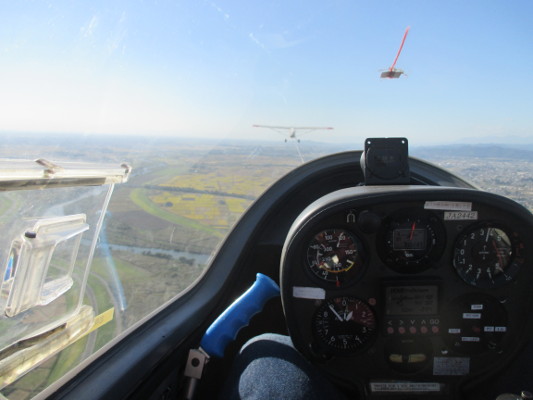
October does not offer enough solar heating at our latitudes, but Itakura gets plenty of mountain wave action, and surprisingly low too. In Moriarty, the wave gets as low as perhaps 11,000 ft MSL or 5,000 AGL on a good day. So, you must catch a thermal first, then work your way up to the wave. In Itakura, the wave is felt as low as 2,000 ft (AGL and MSL are about the same there), and the launch tug can get you that far, even in October.
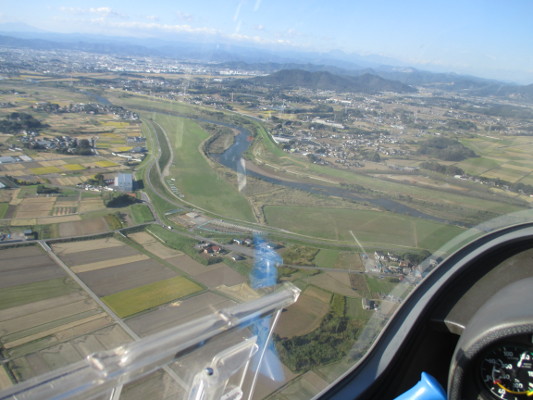
Unfortunately, it's still tricky, and most club members failed at it. But not all. More experienced pilots were able to catch the wave, sometimes with a little help from ridge soaring over a nearby hillock... er, mountain. Of course, I only logged 0.2. Although the glider is the same Grob G103 that I flew at Sundance, I was still too busy to feel the lift, and of course you have to catch it in the first couple of minutes after a release.
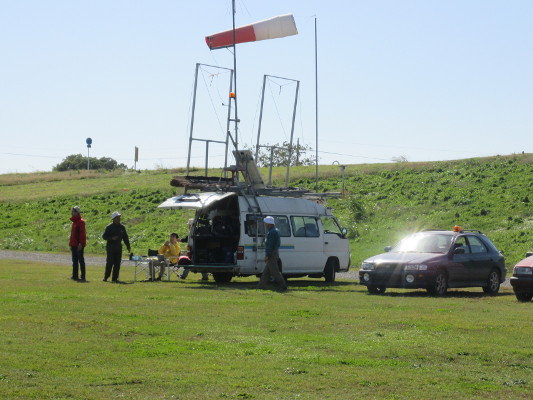
I had a better insight into the workings of the control center at Itakura, too. The JGC have a mobile center in a similar fashion that I noted at Takikawa. Its main function is to report the weather, for the lack of AWOS. Secondary function is to report runway condition and improve safety. Both of these are carried out by the flight manager. Finally, a dispatcher at the center runs the operations by assigning duties to launch and recover, with the attendant bureaucracy.
Posted by: Pete Zaitcev at
11:03 PM
| Comments (1)
| Add Comment
Post contains 328 words, total size 2 kb.
October 19, 2015
The executive summary is really simple: you must be > this < rich to travel by airplane.
It's not just the equipment costs. Looking at it from another angle, there are fundamental issues with the basic technology that prevents airplanes from being generally useful: a car delivers you door to door, while airplane delivers you airport to airport. So, unless you live in an airpark, you must drive to the airport, then fly, then rent a car at your destination. Therefore, in order to be accepted as transportation, the airplane must be so immensely useful to you, that you tolerate this giant handicap. This usually (although not exclusively) occurs when you are so rich, that the value of your time or your privacy is enough to pay for other people, such as chauffeurs and pilots. Or when you live in Alaska.
With that in mind, I'm going to run down the commonly available equipment options and group them into vague classes, from least to most useful, so we have at least some numbers.
Category Zero: STOL airplanes
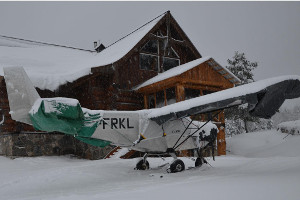
These are actually very useful for transportation in remote areas and are often used in furtherance of a business. Examples: Super Cub clones, Zenith 850, Cessna 182 Peterson & King Katmai, Cessna Caravan, De Haviland Otter. We're going to ignore them in this post.
Recreational aircraft that are useless for transportation
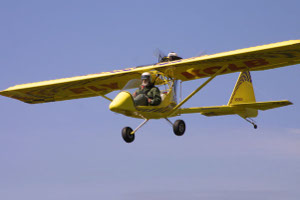
Aircraft in this category typically are too slow to compete with cars. Many are quite inexpensive - on the order of $10k..20k. Their users try and fly them to get somewhere all the time, but generally it's hopeless. Examples: Piper Cub, Cessna 150, Kolb Firestar, Icon A5. Cost: $15k to $230k to buy, $1k to $15k a year without hangar.
A plastic-fantastic Light-Sport Aircraft (LSA)
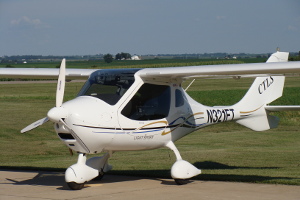
The speed of these airplanes is legally limited to 122 knots, 2 occupants, and 1320 lbs gross. As a rule of thumb they are about 2x the speed of a car. A flight of Remos GX from Santa Fe to Denver (FTG) takes about 2 hours 45 minutes, while a car ride takes about 6 hours (but you have a car at destination). Their payload and baggage space are very limited, to the extent that you must strip shopping bags from purchases you made in Denver before returning to Santa Fe. However, LSA may be flown without a medical certification, which may be crucial. Example: Flight Design CTLS. Cost: $70k to $200k to buy, $2k to $5k a year without hangar.
A basic single
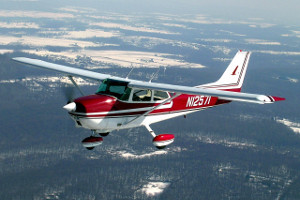
These airplanes provided the bulk of personal transportation until the 1980s. They have enough range and payload to get you and your wife somewhere, just not in great comfort and not very quickly. The speed rate is about 2x of a car (although it goes better in the East where roads are twisty and slow). For example, you can get from Albuquerque to Phoenix in 3 hours, or about as fast as in LSA. But unlike LSA, you can pack for overnight, even week-long trips. In addition, most of the light singles are equipped for light IMC under IFR, which is quite important out East. Examples: Piper PA-28, Cessna 172. Cost: $30k to $60k to buy (yes, they top where LSA just begin), $2k to $6k a year without hangar.
Advanced single
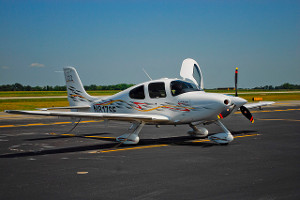
This is the first category that may be useful. We basically have 2 kinds of airplanes in this category: old like Bonanza and new like Cirrus. The Bo-like airplane is less expensive if used; a decent 1950s vintage can be had for as low as $28k (at one time I priced one of those with a swamp cooler - the pinnacle of 1956 luxury). The Cirrus-like airplane has modern amenities, such as air conditioner and emergency parachute; you can expect to pay $130k for a decent example. Either of them is $800k new, which is completely insane, but then you can cruise at 200 knots in them and even hit known icing! Realistically, however, the speed is about 3x to 4x of a car. This facilitates day use, such as being based in Dallas and visiting customers and partners across Texas and a bit beyond. Examples: Beechcraft Bonanza F33, Cirrus SR22. Cost: $40k to $150k to buy used, $12k to $20k a year without hangar (but you'll want one).
Twin and Turbine
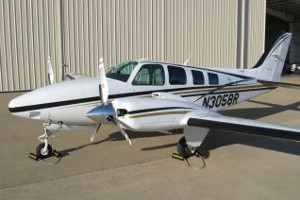
These airplanes are used by people who made it in a real American way. An owner of a construction company is a stereotypical example, although, frankly, nowadays it's commonly a political consultant, a junior financial executive, or a pro sports coach. I know that Dr. Antonio Elias, the chief designer of Orbital Pegasus flies a light twin between the launch and production sites of his rockets. You may even meet a former astronaut tooling along in one of these between Houston and D.C.. They are easily 4x..6x speed of a car and all are equipped for IFR. Example: Beechcraft B58 Baron, Piper Cheyenne. Cost: $200k to $1m and up to buy, $20k to $50k a year. And and you need a 40ft hangar.
Cheap Corporate Transport
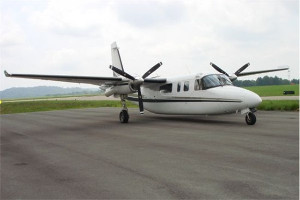
Before Pilatus PC-12 disrupted this category, Beechcraft King Air ruled the roost here. At this price point we're starting to see CEOs and even politicians using the airplanes, which come with onboard toilet and airstair. These airplanes are about half the speed of an airliner and allow you to get from Albuquerque to D.C. in about 5 hours, which may be acceptable for business. Most are still rated for single-pilot operation, but are not flown by owners, who are simply too busy. Many require type ratings to fly anyway. Example: King Air C90, Cessna Citation III. Cost: $1.5m to $20m to buy, $100k a year thereafter. You're not likely to rent a hangar, but will outsource the parking to professionals at Cutter Aviation or other such company.
Category Infinity: Everything Above You
There is a great deal of difference in capability between these airplanes, but they are so crazily expensive, that there's no point in talking about them. By the time you're this rich, you will not have the time to read obscure blogs such as this one anyway. Examples: Gulfstream 650, Boeing BBJ.
From the very rough numbers above, the tragedy of the private aviation in the U.S. is very easy to see. The middle class simply cannot afford to pay a note, maintenance, insurance, and hangar cost of a minimally acceptable airplane, e.g. Cirrus SR22, unless their business can somehow justify its use. We are talking about sinking $30k a year. I used to know a guy who was a middle level manager in IBM - a Director or such. He flew his Cirrus between his home in Florida and sites such as Houston. Something like that may work, but otherwise, it's plainly impossible.
Poor pilots on forums love to make claims about scraping by: caring and feeding for a Bonanza for $8k a year. I literally saw someone to post "I drive a junk car in order to afford this airplane". I respect the enthusiast's zeal, but it's not a way to have public at large to fly little airplanes.
Posted by: Pete Zaitcev at
12:01 PM
| Comments (2)
| Add Comment
Post contains 1202 words, total size 8 kb.
October 16, 2015
One day, a girl condenses out of thin air in front of you. She is your daughter from the future and she's on a mission to correct some of your poorly advised decisions. You are in the Japanese remake of Back to The Future.

The Fragment's Note is another one of those rare Japanese games that are easily available outside of pirated images for Windows (and is not some kind of ridiculuous pornography). At present time, the version in Google Play is in English, while Apple provides a Japanese version for $4. Overall, I think, one can see a theme: the leakage of Japanese games into iPad is greater than into the competition.
Unfortunately, F'Note is not Kanon, again. To begin with, the port to the platform is nowhere as polished. Where Kanon has beautiful resizeable fonts that you can pinch-zoom to work with any portable device and any old eyes, F'Note goes by with one-size-fits all fonts. If the system kills the app, it does not remember where it was and must be loaded from a save. It's ridiculously easy to enter auto modes by mistake, merely touching the iPad in unlucky way. But at least it's playable and there isn't a mouse emulator panel.
The story is nothing to write home about, writing is repeatative. But I learned a few kanji, so $4 well spent. The purchase served its purpose. And it's way, way longer than Hime-Hime Booking: I spent a couple of months on this. I only wish Google stopped being so obnoxious and sold the games that Apple sell. I haven't found anything on iPad that is as good as IMI for Android, and it turned out to be very inconvenient to juggle two tablets.
P.S. Appanretly, VNDB is the only place on the whole Internet where the playthrough exists in a post by member yoxall. Here it is in case it goes down:
Mischa's Route:
I'm showing Mischa around town.
I'm going to the cafeteria.
Eat on the rooftop.
Go to the rooftop.
Haya's Route:
I'm going to the store with Haya.
I brought my own lunch.
Eat in the courtyard.
Go to the park.
Eri's Route:
Uhh...
I'm gonna go buy something.
Eat in the classroom.
Stay in the classroom.
The reverse translation is obvious except for the cafeteria, but figure it out.
BTW, Shizuku literally never appears. There's no such character. I don't know how she manages to get a side story.
Posted by: Pete Zaitcev at
10:39 PM
| No Comments
| Add Comment
Post contains 411 words, total size 3 kb.
October 08, 2015
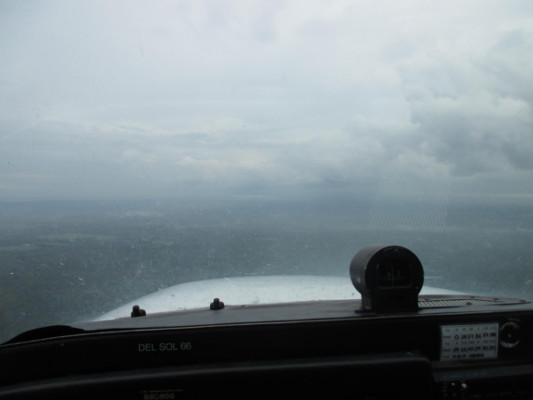
Last week I went to Rochester in the Upstate New-York and was reminded anew why I do not live in one of those states. It was cold, windy, rainy, ceilings were murderous... And that's long before winter and ice. I have no complaints about the big FBO in Rochester proper. I expected some kind of Teterboresque nightmare, but they were quite accomodating to a little bug-smasher. But for weather-related reasons I had to stop at a small airport after hours and renewed my hatred of the east coast. Everything is locked up, no code lock. No tie-down ropes. If I didn't have my own backup ropes, I'd have been in trouble. The crew car is not available, although it clearly exists. I almost froze to death waiting 40 minutes for taxi. Never again.
On the upside, this is a new range record for me: 1427 nautical miles away from home 'drome. The Great Planes treated me well, too: I wasn't nearly hit by a tornado this time.
UPDATE: This is what a morning in Missouri looks like by comparison:

Posted by: Pete Zaitcev at
09:35 PM
| Comments (2)
| Add Comment
Post contains 183 words, total size 1 kb.
August 29, 2015
In an article about the feasibility of modern battleship, Robert Farley makes the following statement:
The Russians periodically promise to build new Kirovs, a claim to take as seriously as the suggestion that Russia will build new Tu-160 strategic bombers.
As you can see, Farley wordsmithed his prediction a little bit so that he could back out of it. Still, he sends an unambiguous message that the program of building new Tu-160 is not to be taken seriously. We're going to write him down as peredicting that it will not happen.
Pulling Tu-160 into the article about battleships is a dick move, because not many readers are likely to know what he is hinting here. The story started on April 29, when Sergey Shoigu, Minister of Defence, pronounced that new production is needed. "The industry" confirmed that it's possible by May 28 (insiders claim that they verified that the equipment to make titanium center-sections was conserved and may be brought back online). On July 2, Shoigu's deputy, Yuri Borisov, stated that a bureaucratic structure is stood up to oversee the program of resurrection. By now, initial contracts with "the industry" (that is, the company that oversees Kazan's plant) have been signed.
As you can see, the typical government machine has come into motion and it's going to roll forward until it runs out of Other People's Money. Farley is betting that it's going to occur before the first of new Tu-160 flies. We're going to revisit his bet in 2025.
Posted by: Pete Zaitcev at
08:50 PM
| Comments (1)
| Add Comment
Post contains 256 words, total size 2 kb.
July 21, 2015
A blog entry by CKS about bicycling going paperless reminded me to blog that I joined the revolution. It happened in Akron, Ohio, on the way home.

Normally I would follow The Big Cicrle, which bends northwards in CONUS, and I prepared for a route along it. However, on that day, a chain of weather systems queued up all the way from Seattle to Pittsburgh. Akron itself was barely VFR. I took a smart decision to deviate far to the south, into Kentucky. The only problem: since I did not expect a deviation of such magnitude, I did not have the required charts.
Normally, a pilot in such situation simply buys the needed charts. I went to the FBO, and the cute clerk girl informed me that they did not sell charts anymore. You see, Akron is a high class field, and jet jockeys all use iPads nowadays, so it was pointless to stock the charts. But a flight school subleased the building, and they had charts for sale, for use by students. I went there, and found that they only had the local chart, which was sufficient for students.
At that moment I understood that the resistance was futile. I whipped out my Nexus 7 and downloaded Garmin Pilot. It was $75 for 1 year, or much cheaper than staying in Akron for a week (or killing myself by taking risks with the storms). I sketched myself a bit of a backup in case of trouble with Nexus, then went south and dodged clouds a little bit. I overnighted in Arkansas, then flew home in 1 day in perfect weather.
I still don't have a smartphone though.
Posted by: Pete Zaitcev at
08:35 PM
| No Comments
| Add Comment
Post contains 281 words, total size 2 kb.
July 05, 2015
A Youtuber known as "The Yankee Marshal" posted a curious video about the differences between the original Rohrbaugh and RM380 that Remington made out of it after they bought the company. Some were obvious, others less so.
-
The caliber change from 9mm to .380 ACP is obvious enough. I daresay Remington is aping the Glock strategy that saw Glock 42 introduced first.
-
They added a slide stop. I'd say when Ruger stole Kel-Tec P-3AT and made LCP, it was the biggest improvement. It's a big deal here too.
-
Magazine release was relocated from the heel to the conventional 1911 location. Not only this is a convenience improvement, it opens the door to extended magazines (see e.g. SiG P290RS). Note that Remington release is ambidextrous, like on Springfield XD.
-
One thing I did not notice myself until I watched the video was that they changed the design (or, rather, the angle) of the trigger guard. The reviewer thinks it's an improvement. The original worked on older CZ-83 but perhaps less so in Rohrbaugh.
-
Last but not least, they reworked the design for ease of manufacturing. Look no further than Kahr P380 and CW380 to see how that works. Price is important.
So, is this a winner? Were they able to atone for the debacle of R51? Could be! Frankly, I'm tempted. If only Remington actually produced it. They were showing it to journalists in January and promised delivery in May, but it's July and guns aren't in the stores. Browning, meanwhile, posted their 1911-380 as promised. I already handled one in a store. So it's not a law of nature than gun introductions must be delayed.
UPDATE: They started shipping RM380 in November 2015. I looked at one in the store and it's about midway in thickness between Kahr P380 and SiG P290RS.
UPDATE: Dan Zimmerman writes in TTAC that perhaps the biggest improvement Remington made was to remove the need to replace the recoil spring every 200 rounds, from which Rohrbaugh "famously" suffered.
Posted by: Pete Zaitcev at
03:39 PM
| No Comments
| Add Comment
Post contains 338 words, total size 2 kb.
May 25, 2015
Imagine for a moment that you wanted a light-shooting hobby gun, perhaps as an impractical and fun companion for your practical pocket carry pistol. What are the options? As it turns out, there are quite a few. I'm going to list several favourites, splitting into 3 groups: cute, PPK, and antiques.
The leader of the cute group is Beretta "Cheetah". Although it looks like its full-size counterpart 92F/M9, the little Beretta 84F/85F has nothing to do with it. It actually is a berettized clone of Browning BDA-380, which Beretta built for Browning for a while. The Beretta modernized the BDA enough to make it into something you might even want to carry, or wanted until the recent crop of micro pistols. In particular, they added a decocker. The 84/85 is the only gun in this group that is based on a blowback action, which is what basically qualifies it for the list. It is heavy, and it is a SA/DA. But it's exceptionally reliable, too. Workmanship is impeccable. Last year of production is 2005.
Sphinx AT 380-M is a European rarity that few people heard about. It's nothing special, but it's very hard to find, enough to make it remarkable. Nicely made in Switzerland. It has both DAO and external safety.
Erma KGP-68A, in contrast, qualifies easily, because it's a Luger! Yes, a real one, although not by DWM, but the next best thing. When I saw it first, I thought it was made in 1930s, but nope, it's in the cute group. They were made well into 1980s (Erma collapsed in 1996 IIRC). Well-preserved examples are worth their $700 price, I think. Unfortunately, most are beat up.
Taurus M380 is also unusual, because it's a revolver. Now, with the inexorable march of the full-moon revolvers, a revolver shooting a rimless cartridge is nothing too unusual nowadays. But this is a .380, possibly even the only one produced thus far. It flashed in a pan before the recent explosion of the interest in .380s. In addition, its barrel is only 1.75" long, so you aren't getting much oomph. Not enough to drive the modern hollowpoints that made .380 practical in 2010s, anyway.
Rounding up the cute group is Browning 1911-380, only announced at the beginning of 2015. It's a 7/8 scale toy 1911, but it's painstakingly real (unlike, e.g. the clones of Colt Mustang). It has a real mainspring housing, for example. Kimber makes basically the same gun, developed completely independently, but their micro-1911 is inteded for carrying. This, however, is clearly a hobby gun.
The PPK group is obviously for the medley of clones of Walther PPK of which there is a legion. CZ-83, Sig P232, Bersa Thunder are only the most interesting. There is also an official Makarov, rebarrelled in Russia. It was imported under the "IZH-70" moniker ("IZH" is not an acronym, but stands for the russian brand, mostly known for fine shotguns). The importation ceased right about the time Clinton and Yeltsin striked a fascist deal about it, so possibly IZH-70 was throttled with it. Or maybe it was a coincidence. It really is a dire pistol and a hobbyist should be better off with a P232 or CZ-83. BTW, don't confuse these with Mauser HSc.
Finally, the antiques. I am sad to go on record with a statement that Colt M1908 Hammerless is probably worthless. It was not a terrible gun, but not a fun one either. It is immensely ugly, too (looks like Tokarev/TT, frankly). And naturally, it's hard to find and it's expensive. If you nab one, you want to keep it in your banker's safe instead of shooting it.
The most interesting of the antiques is probably Remington Model 51. It is unique in using a hesitation locking mechanism, but it is reliable even if reasonably worn. The little assembly plug that contributed so well to the disastrous attempt at reintroduction, the R51, is either missing or is designed properly, not sure which, but anyway, it's not a problem. Hard to believe that it's a 1920s gun, it was so well made — which only makes the shame of R51 so much greater.
Although came later, the Beretta M1934 Corto does not seem anywere as nice as Remington Model 51. Machining is awful on it, parts fit poorly. But it was an actual service pistol in .380, having seen action in WWII. So yeah.
The Llama II/III-A (before Mini-Max) is teetering onto the antique group, but only just. It could be the only decent .380 that Llama made (just look at their clone of FN 1910), maybe even the only decent gun period, with the history of the Ruby etc. But owners love their Llamas.
Posted by: Pete Zaitcev at
09:55 PM
| No Comments
| Add Comment
Post contains 788 words, total size 5 kb.
April 26, 2015
Unlike the previous years, the 2015 show did not leave an impression with a standout exhibit. Sure, there was Jeep Renegade there - a Lattitude model with 2.4L and the ZF 9sp auto. But they didn't bring a Trailhawk. Neither the 1.4L turbo was there. Granted, the jeep leaves a positive impression. The undercarriage looks pretty good, for a crossover. Headroom is good too. But there was not a surprise, a spice. BTW, they didn't have a Renegade available to drive.
The hachiroku in Subaru corner was exhibited side-by-side with a WRX, and frankly it's obvious which one is a high end car, and which one is a low end.
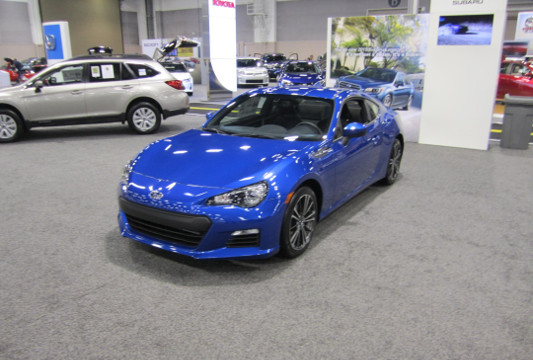

It really is a big problem: FR-S/BRZ is entirely too practical, and aims squarely at someone who needs a daily driver that works as a track car. Sort of the green-hood GT86 that Dori-Dori calls his "hobby car", except his car is probably not his daily driver even. Although you can go wild with the catalog, as the dude says at Jay Leno, the market for that is too small and not taking off as well as the market for Wrangler mods.
If someone wants a fast car from the factory, and not a machine to hone his skills, he could be better off with a Corvette, Mustang, or the WRX (now that the Evo is no more).
Moving on, the 2015 Civic has a surprisingly poor headroom. The fault is shared by its platform mate, ILX. I was quite intrigued by the latter's drivetrain, but this is just unacceptable. At least the new Fit looks just as excellent as the old one, although it uses a CVT now.
In the expensive car hall, BMW continues to destroy Mercedes. The Benz only wins in categories where BMW defaults: Sprinter, S-klasse.
UPDATE: Youtube:CkWyyY718AM by EverydayDriver channel.
Tags: cars
Posted by: Pete Zaitcev at
06:22 PM
| Comments (3)
| Add Comment
Post contains 311 words, total size 2 kb.
April 08, 2015
In case you thought that the escape from Wichita was bad, the talking heads at lobby TV in Crawfordsville, Indiana, were talking themselves silly with the impeding storms with hail and tornado in St.Louis. Considering that we were just about east of them and the storms were moving east, I chose it best to take off to ride a gap. As I fueled the airplane, the tornado sirens started blazing all around. It was like the end of the world.
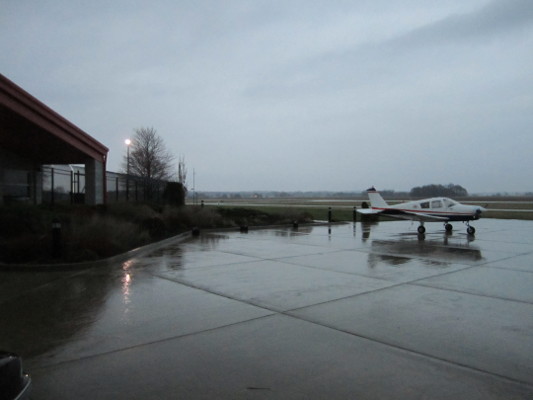
Posted by: Pete Zaitcev at
04:33 PM
| No Comments
| Add Comment
Post contains 84 words, total size 1 kb.
Nobody liked the MysteryAirplane, so here's a Mystery Building. It looks like one at Moffett Field, Sunnyvale, California, but it's not that.
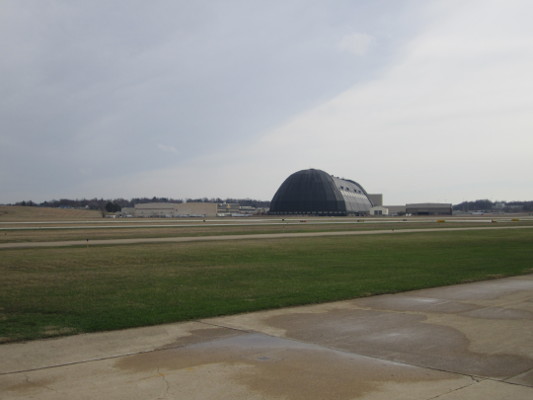
Posted by: Pete Zaitcev at
04:23 PM
| Comments (2)
| Add Comment
Post contains 25 words, total size 1 kb.
February 17, 2015
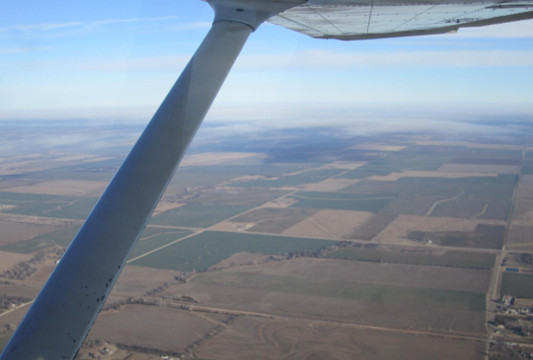
Kansas was nasty today. A cold front was rolling from the north, and it is entirely different in Kansas. In New Mexico, a cold front is associated with a weather system, and it separates cold and warm air masses, both of which rotate around the system's center. All it is, some high clouds and the wind. Here, however, the front separates the cold mass that presses down south from the Canadian bag of ice. It pushes a layer ahead of it, then thicker clouds and snow at the trailing edge. Ugh.
I took off before the onset of the front, then raced around the face of the layer towards southwest. I heard someone reporting rime ice on the way down to Wichita, and a Cirrus picking a pop-up IFR plan. It wasn't a place for me.
Posted by: Pete Zaitcev at
08:57 PM
| No Comments
| Add Comment
Post contains 140 words, total size 1 kb.
February 15, 2015
A stolid Russian publication "The Military-Industrial Courier" published an article by Alexey Ramm (in two parts) that parsed actions of Ukrainian military. It became widely cited in narrow circles, at places like Topwar and Leshiy. As usual, commenters seem to prefer to bend it to their agenda. Leshiy, in particular, pointed out how Ramm "conclusively debunked" the "delusions" about the participation of Russian armed forces. Having actually read the source, I say that Ramm does no such thing. He makes no claims about the composition of the Novorossian militias, only lays down the facts about their relatively low numbers, initially poor armaments, which were gradually, but constantly bolstered by trophies, and what their combat actions were from the point of view of Ukrainian staff.
Due to the place of publication, and targeting the print format, the article is quite long. I invite those interested to Google-translate it themselves. What I found interesting is Ramm's original focus on the way Ukrainians adopted our lessons and how that brought them to ruin in the 1st massive defeat during the summer 2014. Here, I refer to the Illovaisk defeat as the 2nd one, while Ramm only describes the ill-fated "march along the border" in his article.
Leaving all the boring facts, Ramm's executive summary follows in my translation. Observe in particular how he summarizes our actions before and during "The Surge". "ATO" is the Ukrainian newspeak for the war in Novorossia (it translates literally as "Anti-Terrorist Operation"). Emphasis mine throughout.
In the first clashes of May - June, Ukrainian command largely acted upon the American experience of anti-guerilla operations in Afghanistan and Iraq. Not only in the ATO Command, but in Sector commands, there was a number of officers who educated in [military] colleges of NATO countries. According to the experience of Ukrainian detachment in Iraq, manuals were printed and distributed on the topics of making marches, blocking/checking towns, controlling roads, and carrying out the functions of checkpoints. Actual American [Army] field manuals were translated and distributed as well on [additional] topics of storming [towns], providing intelligence support, and CQB.
[...]
Initially, the core [of the plan] was composed upon the American experience of 2004-2005. Back then, the mechanized/mobile groups, by performing a decisive march upon roads, occupied the assigned sites, placing checkpoints along the way. Attacks of the enemy were repulsed by fire of APCs and tanks on the move, with attached mortar support involved as required. Such actions permitted not only take control of roads, towns, bridges, and intersections, but largely immobilize the enemy, limiting his movements to desired regions. [Thus,] in 2004-2005, U.S. military, although with difficulty, achieved all assigned objectives.
The ATO Command planned to use Batallion (BTG) and Company (RTG) tactical groups analogously to American mobile groups. Similarly, the routes of marches for the groups were planned along roads. At the march, mostly single, greater capacity road [or highway] was used, and at intersections with secondary, unpaved roads checkpoints were installed [manned by secondary units].
Towns were supposed to be blocked by checkpoints at all roads. While executing the march, BTG and RTG assigned only avant-guard and arrier-guard. Because the Command did not expect active resistance with modern and heavy weapons, flank guards were not assigned, and their functions were assigned to checkpoints. [On reflection it seems that] the plan expected resistance by guerilla armed with light arms and rocket-propelled grenades.
The Command missed that in Iraq, American mobile groups consisted of 2..3 re-enforced infantry squads with 1..2 squads for checkpoints. They acted in a desert landscape with good visibility, and performed marches at night, making a good use of superior night vision equipment. The supply of mobile groups was done by helicopter. Only after blocking of towns, the supply by truck was established.
The Command assigned cumbersome BTG and RTG as mobile groups, having dozens, at times hundreds, of vehicles, which required a constant supply by all kinds of materiel.
One of the recurrent motifs of Putin's propaganda lapdogs recently was that the supply of modern arms to Ukrainians will do no good, not only because it will be stolen, but because Ukrainians are not capable of deploying those arms. I have to admit that there's some truth to that, and that's despite of Ukraine having the actual experience fighting as part of multi-national coalition. The debacle that ensued when they tried to ape us in combat should underscore just how valuable West Point really is.
For the record, my reservations against arming Ukraine are generally financial. They aren't fighting an important or good fight, despite the duplicitous propaganda about the horrors of Putin's aggression. All Ukrainians are trying to do is to genocide ethnic Russians. What do we care? So, if they want to buy good armaments from us, then sure, why not. But giving them arms for free should take a backseat to giving arms to Kurds. IMHO, of course. And this should not be mixed up with the topic of such arms supply being wasted upon Ukrainians. We already give M1 tanks to Iraq government, which promptly loses them to ISIL, so what difference does it make? In fact, it's probably better to gift them to Putin via Ukrainians, than to ISIL.
But anyway, reading Ramm demonstrated to me once again just how much the American military might turns upon the smarts nowadays. Now I expect liberals do their utmost to infiltrate and destroy military academies first. And we'll never know about it, because MSM will cover it for them.
P.S. Cannot resist a bit more, for the taste:
[By the July 12,] the Height 27, or what later became famous as the Saur-Mogila hill, was occupied by militia. Notably, according to the initial plan, the height was supposed to be taken even before the general advance, by Spetsnaz battalion "Azov" of MVD. But on July 4, the volunteers of "Azov" unexpectedly collided with minutemen, who already took defence on the hill. The personnel of "Azov" advanced upon the hill in civilian vans, which were destroyed in the first minutes of the fight among and near the service buildings of the memorial.
Ukrainian army then tried to take Saur-Mogila with the strength of an RTG of the 79th Brigade on July 12, but that storm was repulsed. They tried again with 1 BTG and 1 RTG of the 25th Airborne, 1 BTG of 51st, and 1 BTG of 95th on July 25. The Airborne managed to occupy the hilltop for a short time, but were unable to maintain control. Another storm was carried out on August 6. For that failure, the CO of the 51st Pavel Protsuk was dismissed. Finally, the 25th Airborne took the Saur-Mogila on August 9. However, by that time, the whole operation collapsed all around them and this Pyrrific success did Ukrainian side no good.
P.P.S. As you can imagine, certain people derived poorly founded historic parallels and tried to score propaganda points.
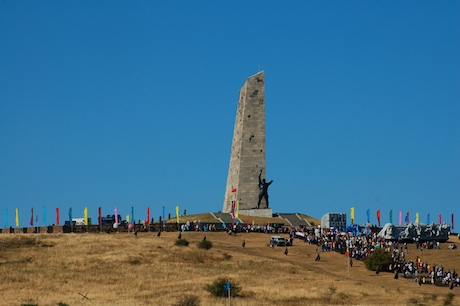
The general view of the memorial before the war (2010).
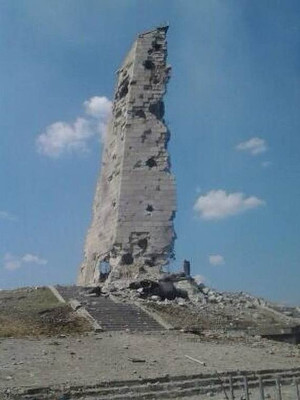
The main pillar was still standing on August 8.
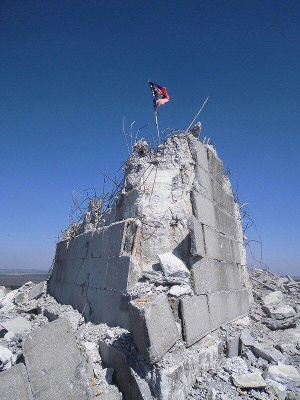
The remains of the monument were finally taken by DNR's army units and militias at the end of August.
Posted by: Pete Zaitcev at
04:12 PM
| No Comments
| Add Comment
Post contains 1178 words, total size 8 kb.
A stolid Russian publication "The Military-Industrial Courier" published an article by Alexey Ramm (in two parts) that parsed actions of Ukrainian military. It became widely cited in narrow circles, at places like Topwar and Leshiy. As usual, commenters seem to prefer to bend it to their agenda. Leshiy, in particular, pointed out how Ramm "conclusively debunked" the "delusions" about the participation of Russian armed forces. Having actually read the source, I say that Ramm does no such thing. He makes no claims about the composition of the Novorossian militias, only lays down the facts about their relatively low numbers, initially poor armaments, which were gradually, but constantly bolstered by trophies, and what their combat actions were from the point of view of Ukrainian staff.
Due to the place of publication, and targeting the print format, the article is quite long. I invite those interested to Google-translate it themselves. What I found interesting is Ramm's original focus on the way Ukrainians adopted our lessons and how that brought them to ruin in the 1st massive defeat during the summer 2014. Here, I refer to the Illovaisk defeat as the 2nd one, while Ramm only describes the ill-fated "march along the border" in his article.
Leaving all the boring facts, Ramm's executive summary follows in my translation. Observe in particular how he summarizes our actions before and during "The Surge". "ATO" is the Ukrainian newspeak for the war in Novorossia (it translates literally as "Anti-Terrorist Operation"). Emphasis mine throughout.
In the first clashes of May - June, Ukrainian command largely acted upon the American experience of anti-guerilla operations in Afghanistan and Iraq. Not only in the ATO Command, but in Sector commands, there was a number of officers who educated in [military] colleges of NATO countries. According to the experience of Ukrainian detachment in Iraq, manuals were printed and distributed on the topics of making marches, blocking/checking towns, controlling roads, and carrying out the functions of checkpoints. Actual American [Army] field manuals were translated and distributed as well on [additional] topics of storming [towns], providing intelligence support, and CQB.
[...]
Initially, the core [of the plan] was composed upon the American experience of 2004-2005. Back then, the mechanized/mobile groups, by performing a decisive march upon roads, occupied the assigned sites, placing checkpoints along the way. Attacks of the enemy were repulsed by fire of APCs and tanks on the move, with attached mortar support involved as required. Such actions permitted not only take control of roads, towns, bridges, and intersections, but largely immobilize the enemy, limiting his movements to desired regions. [Thus,] in 2004-2005, U.S. military, although with difficulty, achieved all assigned objectives.
The ATO Command planned to use Batallion (BTG) and Company (RTG) tactical groups analogously to American mobile groups. Similarly, the routes of marches for the groups were planned along roads. At the march, mostly single, greater capacity road [or highway] was used, and at intersections with secondary, unpaved roads checkpoints were installed [manned by secondary units].
Towns were supposed to be blocked by checkpoints at all roads. While executing the march, BTG and RTG assigned only avant-guard and arrier-guard. Because the Command did not expect active resistance with modern and heavy weapons, flank guards were not assigned, and their functions were assigned to checkpoints. [On reflection it seems that] the plan expected resistance by guerilla armed with light arms and rocket-propelled grenades.
The Command missed that in Iraq, American mobile groups consisted of 2..3 re-enforced infantry squads with 1..2 squads for checkpoints. They acted in a desert landscape with good visibility, and performed marches at night, making a good use of superior night vision equipment. The supply of mobile groups was done by helicopter. Only after blocking of towns, the supply by truck was established.
The Command assigned cumbersome BTG and RTG as mobile groups, having dozens, at times hundreds, of vehicles, which required a constant supply by all kinds of materiel.
One of the recurrent motifs of Putin's propaganda lapdogs recently was that the supply of modern arms to Ukrainians will do no good, not only because it will be stolen, but because Ukrainians are not capable of deploying those arms. I have to admit that there's some truth to that, and that's despite of Ukraine having the actual experience fighting as part of multi-national coalition. The debacle that ensued when they tried to ape us in combat should underscore just how valuable West Point really is.
For the record, my reservations against arming Ukraine are generally financial. They aren't fighting an important or good fight, despite the duplicitous propaganda about the horrors of Putin's aggression. All Ukrainians are trying to do is to genocide ethnic Russians. What do we care? So, if they want to buy good armaments from us, then sure, why not. But giving them arms for free should take a backseat to giving arms to Kurds. IMHO, of course. And this should not be mixed up with the topic of such arms supply being wasted upon Ukrainians. We already give M1 tanks to Iraq government, which promptly loses them to ISIL, so what difference does it make? In fact, it's probably better to gift them to Putin via Ukrainians, than to ISIL.
But anyway, reading Ramm demonstrated to me once again just how much the American military might turns upon the smarts nowadays. Now I expect liberals do their utmost to infiltrate and destroy military academies first. And we'll never know about it, because MSM will cover it for them.
P.S. Cannot resist a bit more, for the taste:
[By the July 12,] the Height 27, or what later became famous as the Saur-Mogila hill, was occupied by militia. Notably, according to the initial plan, the height was supposed to be taken even before the general advance, by Spetsnaz battalion "Azov" of MVD. But on July 4, the volunteers of "Azov" unexpectedly collided with minutemen, who already took defence on the hill. The personnel of "Azov" advanced upon the hill in civilian vans, which were destroyed in the first minutes of the fight among and near the service buildings of the memorial.
Ukrainian army then tried to take Saur-Mogila with the strength of an RTG of the 79th Brigade on July 12, but that storm was repulsed. They tried again with 1 BTG and 1 RTG of the 25th Airborne, 1 BTG of 51st, and 1 BTG of 95th on July 25. The Airborne managed to occupy the hilltop for a short time, but were unable to maintain control. Another storm was carried out on August 6. For that failure, the CO of the 51st Pavel Protsuk was dismissed. Finally, the 25th Airborne took the Saur-Mogila on August 9. However, by that time, the whole operation collapsed all around them and this Pyrrific success did Ukrainian side no good.
P.P.S. As you can imagine, certain people derived poorly founded historic parallels and tried to score propaganda points.

The general view of the memorial before the war (2010).

The main pillar was still standing on August 8.

The remains of the monument were finally taken by DNR's army units and militias at the end of August.
Posted by: Pete Zaitcev at
10:40 AM
| Comments (4)
| Add Comment
Post contains 1178 words, total size 8 kb.
33 queries taking 0.1505 seconds, 84 records returned.
Powered by Minx 1.1.6c-pink.




